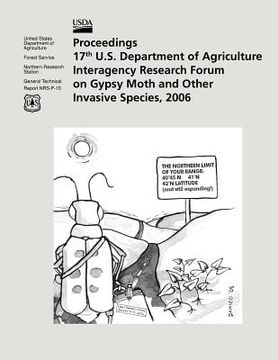Share
Proceedings 17th U.S. Department of Agriculture Interagency Research Forum on Gypsy Moth and Other Invasive Species, 2006 (in English)
U. S. Department of Agriculture
(Author)
·
Createspace Independent Publishing Platform
· Paperback
Proceedings 17th U.S. Department of Agriculture Interagency Research Forum on Gypsy Moth and Other Invasive Species, 2006 (in English) - U. S. Department of Agriculture
$ 13.59
$ 16.99
You save: $ 3.40
Choose the list to add your product or create one New List
✓ Product added successfully to the Wishlist.
Go to My WishlistsIt will be shipped from our warehouse between
Tuesday, June 18 and
Wednesday, June 19.
You will receive it anywhere in United States between 1 and 3 business days after shipment.
Synopsis "Proceedings 17th U.S. Department of Agriculture Interagency Research Forum on Gypsy Moth and Other Invasive Species, 2006 (in English)"
Japanese oak wilt (JOW) has been known since the 1930s, but in the last 15 years epidemics have intensifi ed and spread to the island's western coastal areas. The symbiotic ambrosia fungus Raffaelea quercivora is the causal agent of oak dieback, and is vectored by Platypus quercivorus (Murayama). This is the fi rst example of an ambrosia beetle fungus that kills vigorous trees. Mortality of Quercus crispula Blume was approximately 40 percent but much lower for associated species of Fagaceae, even though each species had a similar number of beetle attacks. It is likely that other oaks resistant to the fungus evolved under a stable relationship between the tree, fungus and beetle during a long evolutionary process. Quercus crispula was probably not part of this coevolution. This hypothesis was supported by the fact that P. quercivorus showed the least preference for Q. crispula, yet exhibited highest reproductive success in this species. On contrary, on the other oaks the index was almost one that guarantees a stable population dynamics for P. quercivorus.
- 0% (0)
- 0% (0)
- 0% (0)
- 0% (0)
- 0% (0)
All books in our catalog are Original.
The book is written in English.
The binding of this edition is Paperback.
✓ Producto agregado correctamente al carro, Ir a Pagar.

